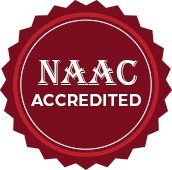Research &
Development
BIThas taken firm but sure steps in ensuring that its campus becomes the preferred destination for quality research. In a short span BIT has established 4 research centres that have been approved by VTU.
R & D in
MECHANICAL engineering
SUPERSONIC AERODYNAMICS RESEARCH LABORATORY
In recent years, the ability to predict the behavior of supersonic flow has become increasingly important. The pressures acting on the blunt base of a body in a supersonic flow has become the topic of interest for many researchers in the field of ballistics. Recognising the rapid growth of interest in supersonic drag problem associated with the development of supersonic aircraft, projectiles, missiles and spacecraft, we at Bearys Institute of Technology, Mangalore have designed an experimental facility to study the base drag arising from flow separation behind blunt bases with the help of internal flow through sudden expansion region.
The laboratory is equipped with state of the art equipments like – Electric powered screw type air compressor (volume discharge 55 cfm of air, pressure 138 psi), IE2 TEFC Squirrel cage Induction Motor 11 kW, 400 V, 50Hz, Two mild steel air storage pressure vessels volume 2 m3, pressure 200 psi, A settling chamber with provision for model mounting at the centre with a three dimensional traverse mechanism having six degrees of freedom (3 translational and 3 rotational).
SCOPE OF
COLLABORATIVE RESEARCH
To study and compute the trajectories of unguided rockets, shells, bombs and missiles using six degree of freedom trajectory model. The trajectory computation data obtained is used to compile the range tables for the shells/rockets/bombs. Microjets designed & tested at our laboratory could be used in industry for precision cutting. Isolators are designed to isolate shock waves from the supersonic nozzles. The experiments conducted using these could provide valuable input for Ram jet/Scram jet. Micro-jets could be used to control the sub-sonic/sonic/supersonic jets. Thus could be used in the designing of racing cars, automobiles, RP-Bomb for runway/airstrip denial and simulation of bomb trajectory.
R & D in
Physics
NONLINEAR OPTICS AND ENVIRONMENTAL RADIOACTIVITY
Our Vision is to carry out cutting edge research in the areas of Non-linear optics and Environmental radioactivity and to nurture quality human resources.
Non Linear Optics is one of the branches of Physics. It is becoming increasingly significant as it is applied to other area of Physics, Science and Technology. The development of non-linear materials and the advent of high power laser has enabled to realise the second and third harmonic generation in certain non-linear materials. These materials find applications in the field of medicine and optical communication.
Environmental radioactivity research is also an active research field worldwide. Human beings are continuously exposed to the ionising radiation coming from the terrestrial and extra-terrestrial sources. The terrestrial radiation originate from the radionuclides present in the earth crust and extra-terrestrial radiation come from cosmic rays. The radiation levels vary from place to place depending on the radioactivity contents in the soil and rocks. There are regions in the world where radiation level is exceptionally high due to the enrichment of radionuclides in soil. The elevated level of exposure is harmful to human beings. Therefore it is important to measure the radioactivity levels in different parts of the world. The research has great importance in radiation protection.
In the department of Physics at BIT Mangalore, the research is being pursued actively in the above research areas. The research work has been published in international peer-reviewed journals. There is a great potential for young researchers to carry out cutting edge research, which has great relevance to the advancement of science and technology.
NUCLEAR RADIATION AND INSTRUMENTATION
Gamma Spectrometry, Alpha and Beta Counting.
Radon Measurements.
Polonium and Radioactive Lead Measurements.
Nuclear Electronics.
R & D IN
MATHEMATICS
GRAPH THEORY AND WAVELET CURVE ESTIMATION
Our vision is to carry out quality research that encourages research scholars to expand innovative research programs in the field of graph theory and wavelet curve estimations.
Graph theory is one of the younger branches of Mathematics. It is becoming increasingly significant as it is applied to other areas of mathematics, science and technology. It is being actively used in various fields like biochemistry (genomics), electrical engineering (communication networks and coding theory), computer science (algorithms and computation) and operations research (scheduling), Social Network Analysis. It is interesting to note that as specific applications have increased in number and in scope, the theory itself has been developed beautifully as well. Further its scope is elaborated to coding theory, x – ray crystallography, radar, astronomy, circuit design, communication network addressing and data base management.
Wavelet curve estimation is a method of regression analysis in which the unknown function is constructed according to the data that are contaminated with additive noise. Wavelet based methods are extensively used in areas such as regression density estimation inverse problems factor analysis, modelling etc. During the 1990s, the nonparametric regression literature was dominated by (nonlinear) wavelet shrinkage and wavelet thresholding estimators. These estimators have emerged as a new subset of an old class of nonparametric regression estimators. Donoho & Johnstone (1994) and Donoho, Johnstone, Kerkyacharian & Picard (1995) have introduced nonlinear wavelet estimators in nonparametric regression through thresholding which typically amounts to term-by-term assessment of estimates of coefficients in the empirical wavelet expansion of the unknown function.
At the department of Mathematics, we strive to pursue active research in quantitative structure property relationship (QSPR) and quantitative structure activity relationship (QSAR) in mathematical chemistry. We are analyzing the molecular diversity and try to optimize the structure-property relationships by the help of different topological indices. Besides we correlate certain physio-chemical properties (boiling point, enthalpy of vaporization, stability, strain energy etc.) of chemical compounds especially in the organic family. Thus we try to establish chemical applicability of molecules.


